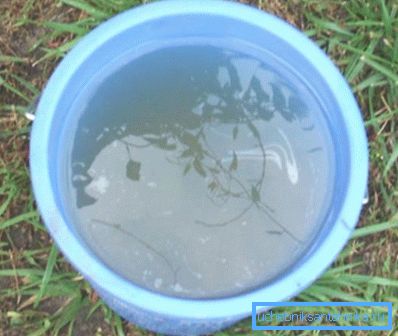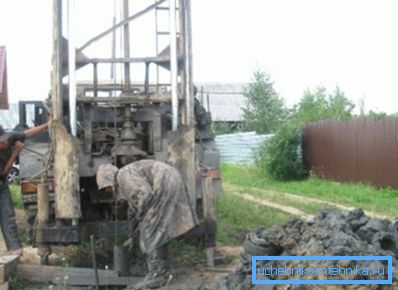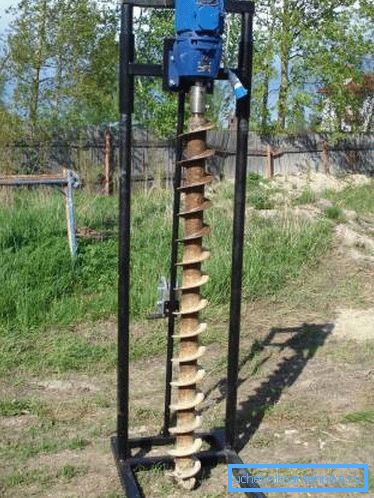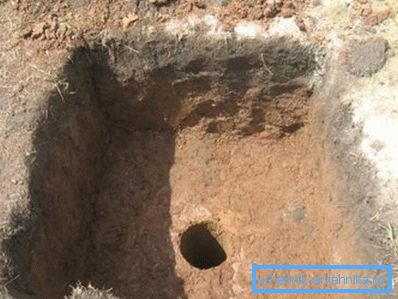How much does it cost to drill a hole on the plot yourself
True truth: water is life! Life-giving moisture is needed both for people and plants. However, not in all country estates there is such a benefit of civilization as water supply: sometimes conducting a centralized water supply is even impractical.
Own well at the site will quench your family's thirst with clean drinking water, ensure full watering of the plantings and remain for household needs. So, how to drill a well on the site and how much time and money will this process take?

How buryat professionals
Experts begin their work with the drafting of the project, for which geological and hydrogeological exploration of the area is carried out. This information is extremely important - on its basis the estimate is calculated. The price of work directly depends on the depth of the future well: the deeper, the more expensive.
Depending on the expected scope of work, drilling rigs are used, almost completely replacing manual labor. After the well has been dug and reinforced, the drillers install and regulate the pumping equipment. This is followed by a test pumping.

And only when clear, clear water comes out of the pipe, can we assume that the well is ready. It remains only to make calculations of the flow rate and make them in the passport of the source. Professionals also recommend in order to avoid trouble to carry a water sample for analysis to the local SES.
Of course, the work of drillers-pros, special equipment and tools cost a lot of money. But there is a solution - you can try to drill a well with your own hands.
Preparatory work before the start of self-drilling
Independently determine the depth of the aquifer is extremely difficult. In this difficult task you can help the owners of neighboring areas already provided with water. Although here it is necessary to bear in mind that as there are no two absolutely identical terrain reliefs, so the aquifers can be at different depths.
You also need to know that under the ground usually pass several aquifers and the quality of the fluid in them can vary significantly. Thus, the topmost (upper layer) is located in unstable soil and the water in it can be with impurities that are unsafe for health. In addition, in the heat, the moisture simply dries out and the well becomes dehydrated.
If the aquifer is located at a depth of 12 meters, an Abyssinian well is arranged; up to 50 meters - a sandy well; from 200 meters - artesian.
Note! It makes sense to independently drill a well in the water, if the depth of water in the area does not exceed 50 meters, otherwise you will need more expensive professional equipment and the ability to handle it.
Equipment and consumables required in the work
- Drilling rig. You can either rent it or buy it. The experience of the dacha life suggests that such an acquisition will again and again prove useful;

- Casing pipe - asbestos or plastic. The diameter and length of the pipe is chosen based on the size and estimated depth of the well;
- Pump. Surface power will be enough to lift water no more than 8 meters, submersible (partially or completely) is indispensable when the waters are located more than 10 meters underground. Submersible pumps can be controlled automatically, which increases their price;
- Other equipment: garden shovels for the device of the hole, rope and cargo to determine the depth of the hole, etc.
As you can see, the list of what to manually drill a well is small, but costs are coming up significant.
Choosing a place under the well
The main rule is to locate the well in your own area away from the neighbor’s one, otherwise depletion of the aquifer can negate all your efforts. The place should be chosen in a lowland, far from cesspools and outbuildings. It is more expedient to carry out all drilling operations prior to the beginning of the site improvement.
Stages of work
On how carefully the instructions for drilling are observed, the completion time, labor costs and water quality depend.
- First, it is necessary to strengthen the unstable upper soil layer in order to avoid blockages and shedding. To do this, dig a hole width, length and depth of 1.5 meters. Its walls are strengthened with sheet iron or boards;

- A drill rig is installed above the pit on the tripod. It is more rational to use rotational mechanisms, which not only “bite” into the rock, but also raise its fragments to the surface on a screw transport. The diameter of the well can not be less than 12 cm, respectively, the drill is chosen to be larger - 15 cm;
- After the well is dug (there was a set of water), a pipe is lowered into it. Its main function is to protect the hole in the ground from crumbling the ground;
- The gap between the ground and the ground is poured with concrete;
- Next, install the equipment - the pump;
- Water is allowed to settle for several days and replace its statistical and dynamic levels. Then, by calculation, very approximate data on the well productivity (flow rate) are obtained;
- Following the recommendations of professional drillers and common sense, it is advisable to pass a water sample from the well for analysis.
This work on the water supply of the site is completed. Of course, the initial costs of this business seem exorbitant, but they will pay off very soon, because you won't have to pay more for water from the well, of course, provided that you have properly operated your own “water supply system”.

Summary
We talked about how to manually drill a hole in the garden. The video in this article will help you more fully present the entire scope of work and the degree of their severity. Remember that it is not enough to drill an artesian well, and you will have to resort to the services of specialists using powerful, professional equipment.